This tutorial performs a heat transfer analysis on a steel pipe, as shown in Figure 1. The temperature on the inside surface of the pipe is 60 C. The outside surface is exposed to the surrounding air, which is at 20
C. The outside surface is exposed to the surrounding air, which is at 20 C. The temperature distribution within the pipe can be determined by solving the linear steady state heat conduction and convection solution.
C. The temperature distribution within the pipe can be determined by solving the linear steady state heat conduction and convection solution.
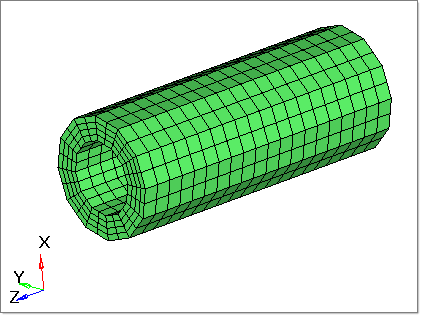
Figure 1: Model review
The following exercises are included:
| • | Create the thermal material and property |
| • | Create and apply the thermal boundary conditions on the model |
| • | Submit the job to OptiStruct |
| • | Post-process the results in HyperView |
Set up the Model in HyperMesh
Step 1: Load the OptiStruct User Profile and import the model
| 2. | Select OptiStruct in the User Profiles dialog and click OK. This loads the user profile. It includes the appropriate template, macro menu, and import reader, paring down the functionality of HyperMesh to what is relevant for generating models for OptiStruct. |
| 3. | Click the Import Solver Deck panel toolbar icon  . An Import window opens. The File type: is OptiStruct. . An Import window opens. The File type: is OptiStruct. |
| 4. | In the File: field, click the open file icon  . A Select OptiStruct file browser window opens. . A Select OptiStruct file browser window opens. |
| 5. | Select the thermal.fem file you saved to your working directory from the optistruct.zip file. Refer to Accessing the Model Files. |
| 6. | Click Open. The location of thermal.fem displays in the File: field. |
| 7. | Click Import > Close. The thermal.fem database is loaded into the current HyperMesh session. |
Step 2: Create the thermal material properties
Create the material and property collectors before creating the component collectors.
| 1. | In the Model browser, right-click and select Create > Material. A default MAT1 material displays in the Entity Editor. |
| 3. | Check the box in front of MAT4. |
MAT4 card image appears below MAT1 in the Entity Editor. The MAT1 card defines the isotropic structural material. MAT4 card is for the constant thermal material. MAT4 uses the same material ID as MAT1.
| 4. | Enter the following values for the material, steel, in the Entity Editor. |
[E] Young’s modulus = 2.1 x 1011 Pa
[NU] Poisson’s ratio = 0.3
[RHO] Material density = 7.9 x 103 Kg/m3
[A] Thermal expansion coefficient = 1.0 x 10-5 /  C
C
[K] Thermal conductivity = 73W / m  C
C
[H] Heat transfer coefficient = 40W / m2  C
C
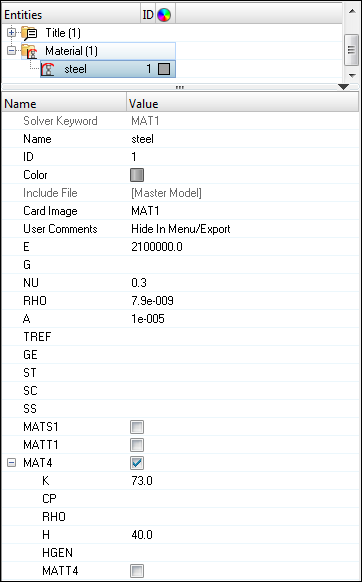
Figure 2: The Material Entity Editor
A new material, steel, is created with both structural and thermal properties.
| 5. | In the Model browser, right-click and select Create > Property. A default PSHELL property displays in the Entity Editor. |
| 7. | For Card Image, select PSOLID and click Yes to confirm. |
| 8. | For Material, click Unspecified > Material. |
| 9. | In the Select Material dialog, select steel and click OK. |
The property of the solid steel pipe has been created as 3D PSOLID. Material information is linked to this property.
Step 3: Link the material and property to the existing structure
Once the material and property are defined, they need to be linked to the structure.
| 1. | In the Model browser, click the component pipe. The Entity Editor opens. |
| 2. | For Property, click Unspecified > Property. |
| 3. | In the Select Property dialog, select solid and click OK. |
The material steel now is automatically linked to the component pipe.
Apply Thermal Boundary Conditions on the Model
In this exercise the thermal boundary conditions are applied on the model and saved in a predefined load collector spc_temp. A predefined node 4679 specifies the ambient temperature. A predefined node set node_temp contains the nodes on the inside surface of the pipe.
Step 4: Create temperatures on the inner surface of the pipe
| 2. | From the Analysis page, click constraints. |
| 3. | Go to the create subpanel. |
| 4. | Make sure the current selection field is set to nodes. |
| 5. | Click nodes >> by sets. |
| 6. | Select node_temp and click select. |
| 7. | Uncheck the box in front of dof1, dof2, dof3, dof4, dof5, and dof6 and verify that the entry fields are set to 0.0. |
| 8. | Set load types = to SPC. |
This applies the temperature 0.0 on the inside nodes. In the next step, the temperature value is updated to 60.
| 10. | Click the Card edit icon  . . |
| 11. | Click loads >> by collector. |
| 12. | Check the box in front of spc_temp and click select. |
| 13. | Click config= and select const. |
| 14. | Click type= and select SPC. |
| 16. | In the field of D, enter 60.0. |
| 17. | Click return three times to go back to the Analysis page. |
Step 5: Create ambient temperature
| 1. | Make sure spc_temp is the current load collector. |
| 2. | From the Analysis page, select the constraints panel. |
| 3. | Go to the create subpanel. |
| 5. | Input the ID of the predefined node 4679. Node 4679 should be highlighted. |
| 6. | Uncheck the box in front of dof1, dof2, dof3, dof4, dof5, and dof6 and verify that the entry fields are set to 0.0. |
| 8. | Click Card edit icon  . . |
| 10. | Select the ambient spc just created on the screen. |
| 11. | Click config= and select const. |
| 12. | Click type= and select SPC. |
| 14. | In the field of D, enter 20.0. The temperature boundary conditions are created, as shown in the following figure. |
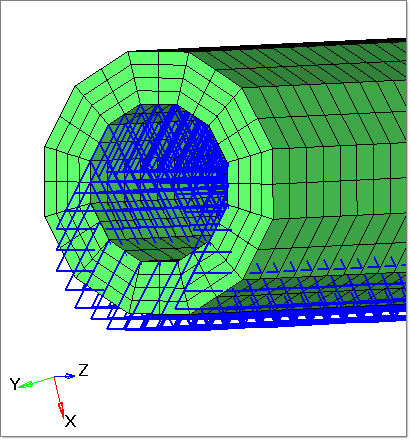
Figure 3: Thermal boundary conditions.
| 15. | Click return three times to go back to the Analysis page. |
Step 6: Create CHBDYE surface elements for heat convection
Surface elements are to be created to simulate the heat exchange between the solid pipe and the surrounding air. A predefined element set elem_convec, which contains the solid elements on the outer surface of the pipe, is used to define the surface elements.
| 1. | Click BCs > Create > Interfaces. |
| 2. | For Name, enter convection. |
| 3. | For Card Image, select CONVECTION from the drop-down menu. |
| 4. | Click Color and select a color from the palette. |
| 5. | Click MID to activate it. |
| 6. | lick Unspecified > Material. |
| 7. | In the Select Material dialog, select steel and click OK. |
An element group convection and a free convection property PCONV are created.
| 8. | For Slave Entity IDs, select Elements. A panel appears under the graphics area. |
| 9. | Click on the switch button beside elems and select faces from the list. |
| 10. | Click the highlighted solid elems and select by sets from the selection menu. |
| 11. | Select element set elem_convec and click select. |
| 12. | Click nodes in face nodes field. |
| 13. | Select 4 nodes on the surface face of a solid element, as shown in the following figure. |
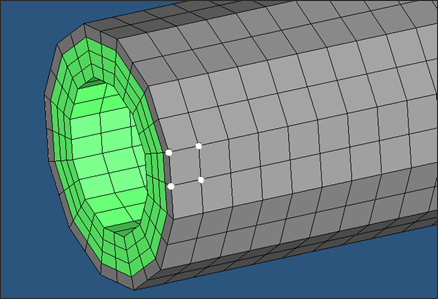
Figure 4: Selected surface nodes on the solid element outside the pipe.
| 14. | In the break angle = field, enter 89.0. |
| 15. | Click add. This adds the CHBDYE surface elements to the solid elements on the outer surface following the same side convention, as shown in the following figure. |
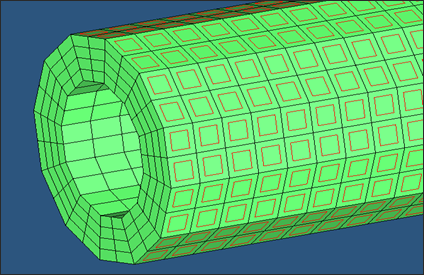
Figure 5: Surface elements on the outer layer of the pipe.
| 16. | Click return to go back to the Create group window. |
Step 7: Define the convection boundary condition to surface elements
| 1. | Click the Card Edit icon  . . |
| 3. | Click elems >> by group. |
| 4. | Check the box in front of CONVECTION and click select. |
| 5. | Click config= and select slave4. |
| 6. | Click type= and select CHBDYE4. |
| 7. | Click edit and go to the CHBDYE card image panel. |
| 8. | Check the box in front of CONV. |
| 9. | Click TA1 and input the ambient node ID 4679, as shown below. |

Figure 6: Defining the convection boundary condition
| 10. | Click return three times to go back to the Analysis page. |
Step 8: Create a heat transfer loadstep
An OptiStruct steady state heat convection loadstep is created, which references the thermal boundary conditions in the load collector spc_temp. The gradient, flux, and temperature output for the heat transfer analysis is also requested in the loadsteps panel.
| 1. | In the Model browser, right-click and select Create > Load Step. A default loadstep displays in the Entity Editor. |
| 2. | For Name, enter heat_transfer. |
| 3. | Click on the Analysis type field and select Heat transfer (steady state) from the drop-down menu. |
| 4. | For SPC, click Unspecified > Loadcol. |
| 5. | In the Select Loadcol dialog, select spc_temp and click OK. |
| 6. | Check the box next to Output. |
| 7. | Activate the options of FLUX and THERMAL on the sub-list. |
| 8. | Activate the FORMAT fields for both outputs and select H3D format. |
| 9. | Activate the OPTION fields for both outputs and select ALL. |
The FORMAT and OUTPUT fields for THERMAL output may open up a new window. Click on the first field in the window to select the corresponding values.
FLUX and THERMAL output can also be requested in the Control cards panel on the Analysis page.
Submit the Job
Step 9: Launch OptiStruct
| 1. | From the Analysis page, click OptiStruct. |
| 2. | Click save as. A Save As browser window opens. |
| 3. | Select the directory where you would like to write the OptiStruct model file and enter the name for the model, thermal_complete.fem, in the File name: field. The .fem filename extension is the recommended extension for Bulk Data Format input decks. |
The name and location of the thermal_complete.fem file displays in the input file: field.
| 5. | Set the memory options: toggle to memory default. |
| 6. | Set the run options: toggle to analysis. |
| 7. | Set the export options: toggle to all. |
| 8. | Click OptiStruct. This launches the job. |
If the job is successful, you should see new results files in the directory from which thermal_complete.fem was selected. The thermal_complete.out file is a good place to look for error messages that could help debug the input deck if any errors are present.
View and Post process the Results
Gradient temperatures and flux contour results for the steady state heat conduction analysis and the stress and displacement results for the structural analysis are computed from OptiStruct. HyperView will be used to post process the results.
Step 10: View the results for heat transfer analysis
| 1. | When the message Process completed successfully is received in the HyperWorks Solver View dialog, click HyperView. HyperView is launched and the results are loaded. A message window appears to inform of the successful model and result files loading into HyperView. |
| 2. | Click Close to close the message window, if one appears. |
| 3. | Click the Contour toolbar icon  . . |
| 4. | Select the first pull-down menu below Result type: and select Grid Temperatures(s). |
| 5. | Click Apply. A contour plot of grid temperatures is created. |
You may have to use Edit Legend in the Contour panel to get the contour, as shown in Figure 7.
| 6. | Select the first pull-down menu below Result type: and select Element Fluxes (V). |
You may have to use Edit Legend in the Contour panel to get the contour. Both temperature and flux contour plots are shown in Figure 7.
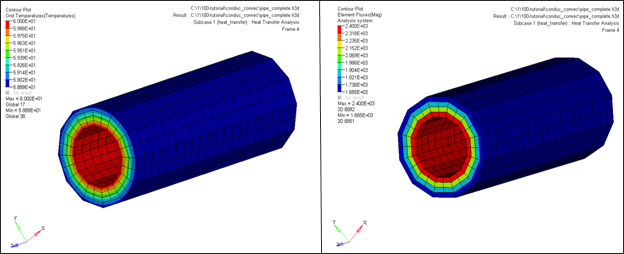
Figure 7: Results of heat transfer analysis
See Also:
OptiStruct Tutorials
















![]() C. The outside surface is exposed to the surrounding air, which is at 20
C. The outside surface is exposed to the surrounding air, which is at 20![]() C. The temperature distribution within the pipe can be determined by solving the linear steady state heat conduction and convection solution.
C. The temperature distribution within the pipe can be determined by solving the linear steady state heat conduction and convection solution.
![]() C
C![]() C
C![]() C
C




